 |
 |
 |
| |
Kaposi sarcoma incidence flat among black men in southern US
|
| |
| |
22nd International AIDS Conference, Amsterdam, Netherlands, July 23-27, 2018
Mark Mascolini
Black men in the southern United had a stable incidence of Kaposi sarcoma (KS) from 2000 to 2014, whereas KS incidence fell among black men in other regions, according to analysis of the US Cancer Statistics (USCS) registry [1]. Overall KS incidence (the new-diagnosis rate) fell among US men from 2000 to 2014, but incidence rose among 20-to-29-year-old black men.
KS incidence dropped 83.5% in the United states from 1990-1995 to 1996-2002 [2]. But Baylor College of Medicine researchers who conducted the new study noted that KS incidence varies by region and demographic subgroup. For example, the National Cancer Institute's Surveillance, Epidemiology, and End Results (SEER) database showed higher KS incidence in US regions with greater poverty in 2005-2009.
The Baylor team aimed to pinpoint differences in KS incidence by age, race, and US geographic region by using the USCS registry. They figured annual percentage change (APC) in incidence with the National Cancer Institute's Joinpoint program. They limited the analysis to 20-to-54-year-old men. About 94% of KS cases in this age group are related to HIV.
From 2000 through 2014, age-adjusted KS incidence per 100,000 men fell significantly in the West (APC -4.72), the Northeast (APC -4.22), the South (APC -1.94), and the Midwest (APC -1.76). Over those same years crude KS incidence per 100,000 men fell sharply in 30-to-44-year-olds (APC -5.35) but rose in 20-to-29-year-olds (APC 2.67) and stayed flat in 45-to-54-year-olds (APC 0.03).
From 2000 to 2014, age-adjusted KS incidence among men dropped significantly in whites (2008-2014 APC -6.34), Hispanics (2000-2014 APC -5.11) and blacks (APC -3.31). By region KS incidence per 100,000 black men fell significantly in the Northeast (2002-2009 APC -8.53, 2012-2014 APC -26.17), in the Midwest (2000-2014 APC -3.40), and in the West (2000-2014 APC -5.59). But KS incidence per 100,000 black men stayed essentially flat in the South (2000-2014 APC -0.86).
Crude KS incidence per 100,000 black men rose significantly in men 20 to 29 years old (2000-2014 APC 4.03), while falling across those years in 30-to-44-year-olds (2000-2014 APC -5.26) and 45-to-54-year-olds (2000-2014 APC -2.30). Age-adjusted incidence per 100,000 men fell significantly in Los Angeles-Long Beach, Miami-Fort Lauderdale, New York-Newark, and San Francisco-Oakland, while rising nonsignificantly in Atlanta (2000-2014 APC 1.49). In 2014 KS incidence was nearly twice higher in Atlanta than in New York City.
The researchers encouraged KS treatment and prevention efforts aimed at closing regional, racial, and age gaps in KS incidence.
References
1. Chiao E, Aaron T, Dong Y, Kathryn R, Kramer J, Donna W. Kaposi sarcoma incidence remains unchanged among African American males in the Southern United States: U.S. Cancer Statistic Data, 2000-2014. AIDS 2018: 22nd International AIDS Conference, Amsterdam, Netherlands, July 23-27, 2018. Abstract WEAB0106.
2. Engels EA, Biggar RJ, Hall HI, et al. Cancer risk in people infected with human immunodeficiency virus in the United States. Int J Cancer. 2008;123:187-194.
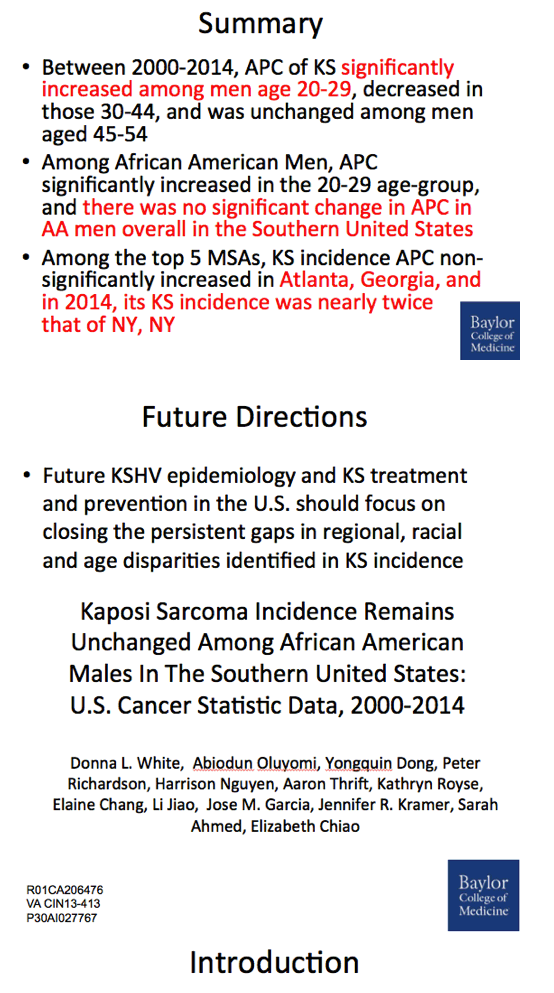
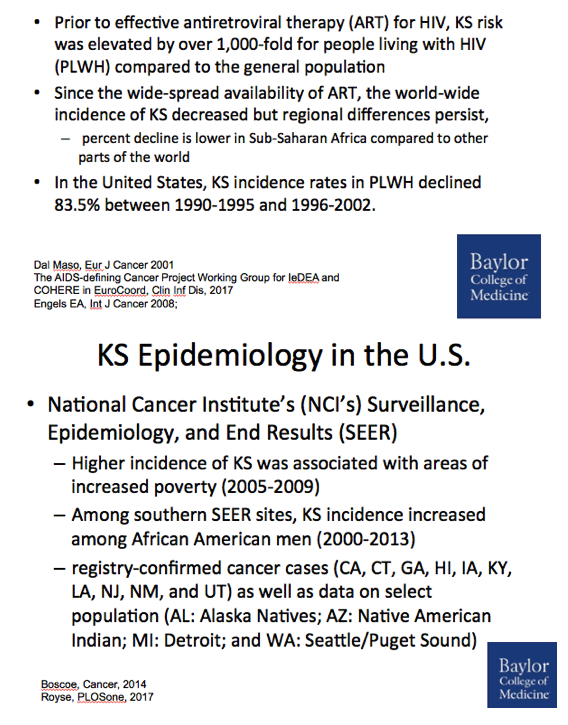
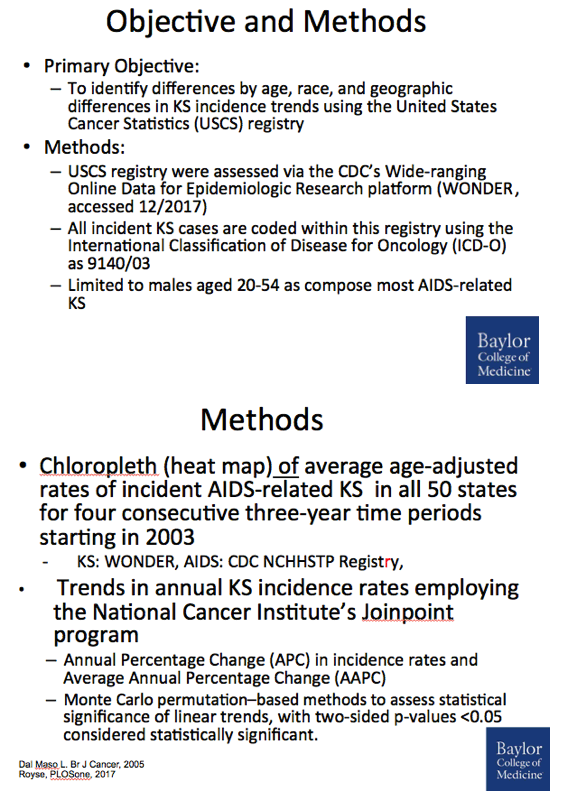
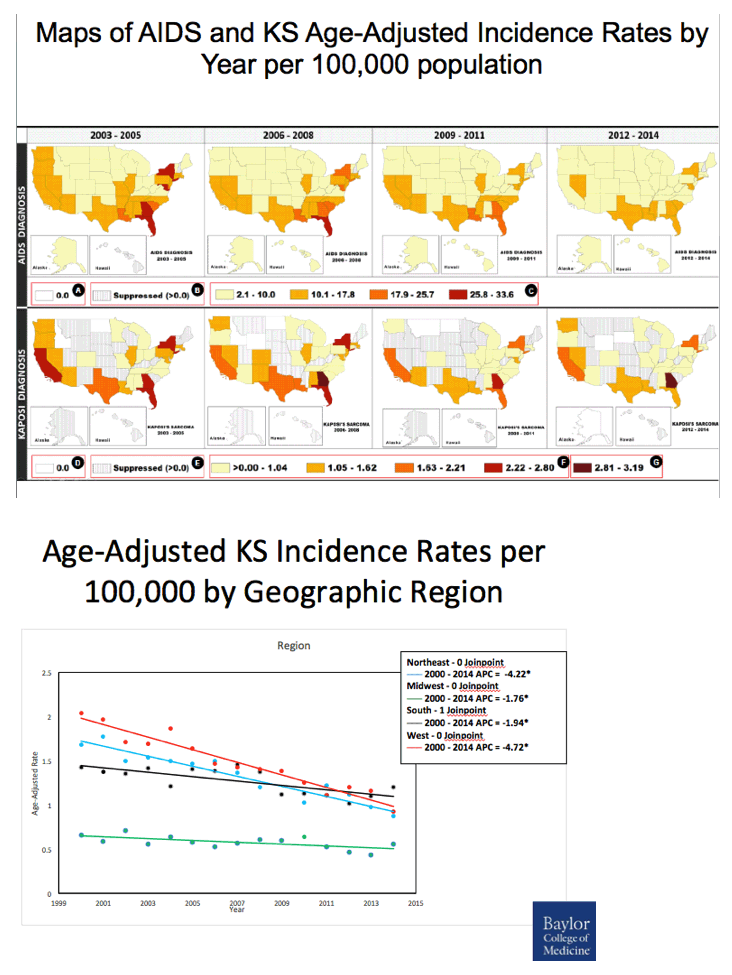
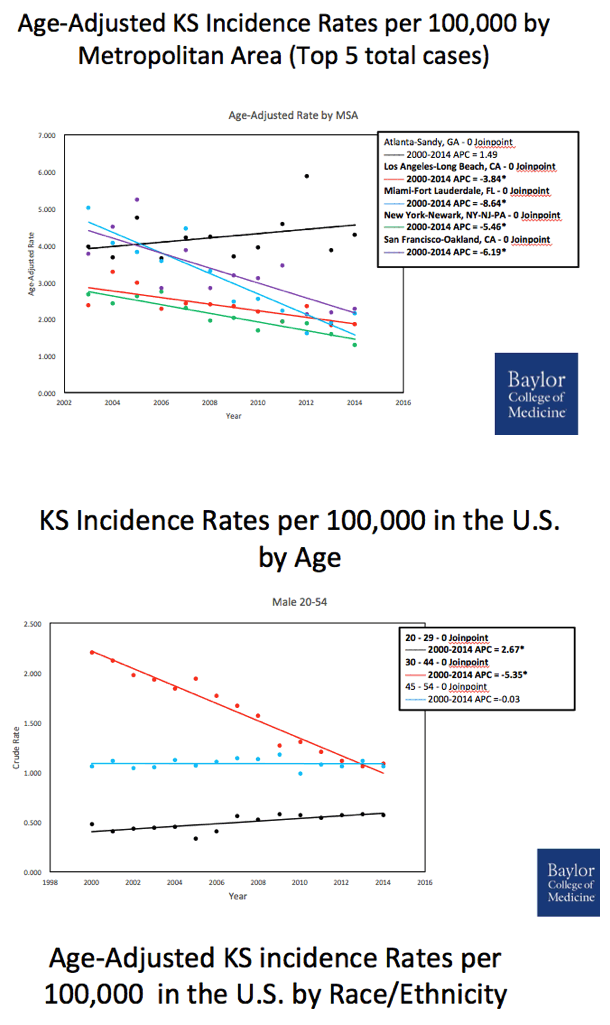
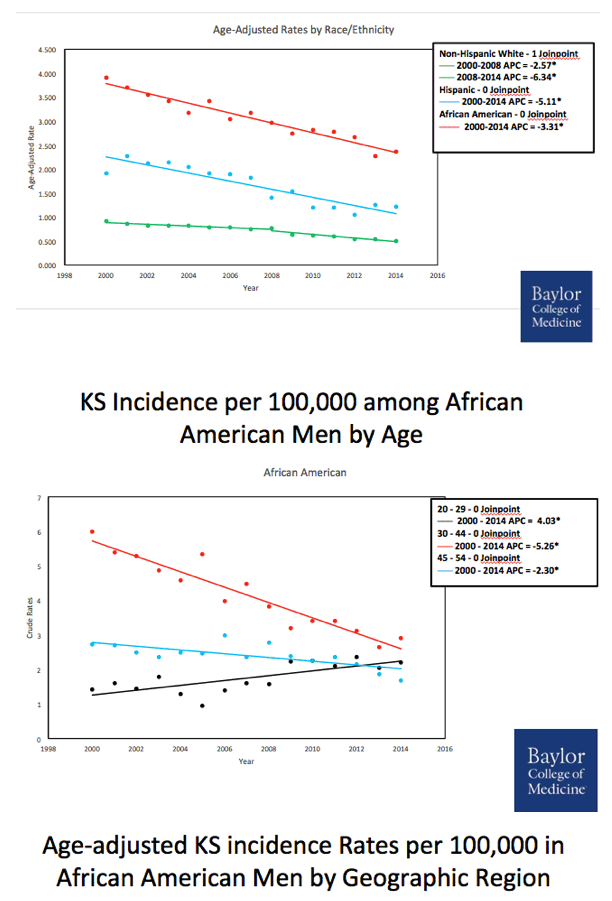
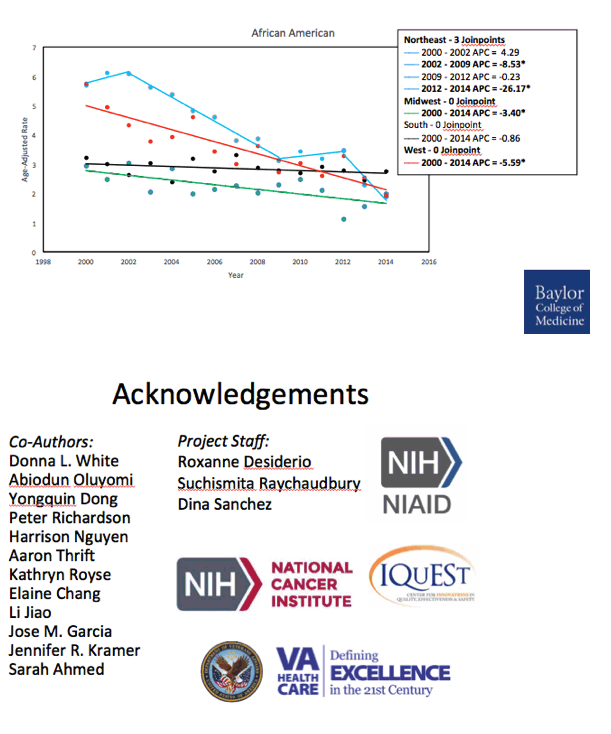
|
| |
|
 |
 |
|
|